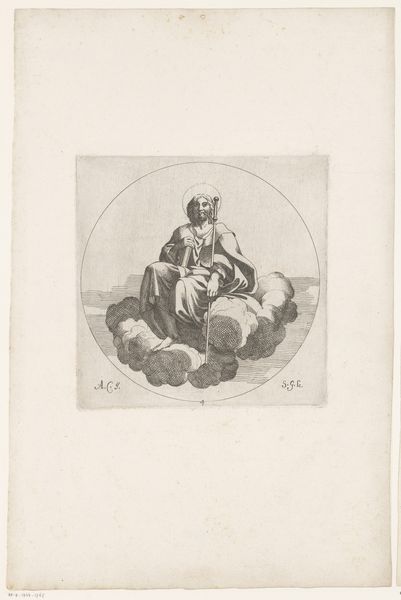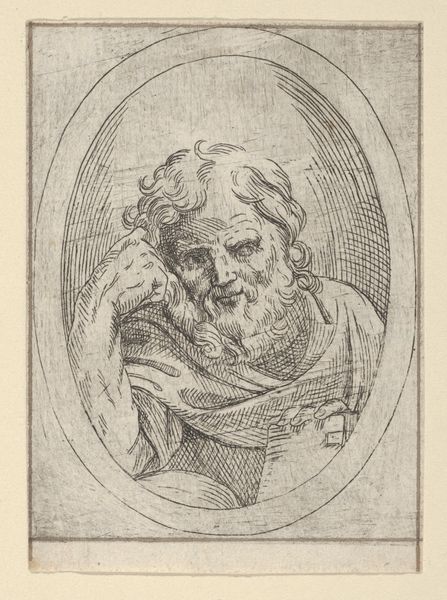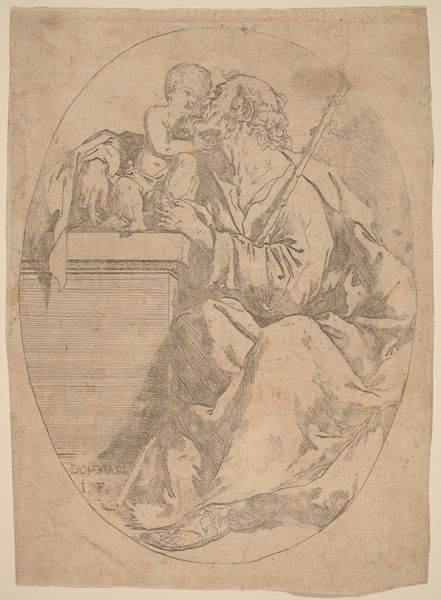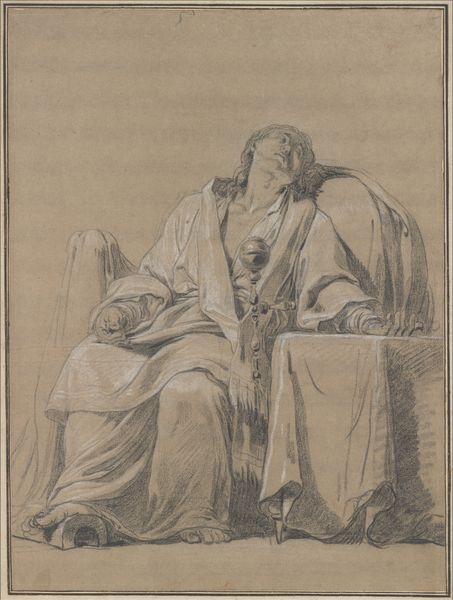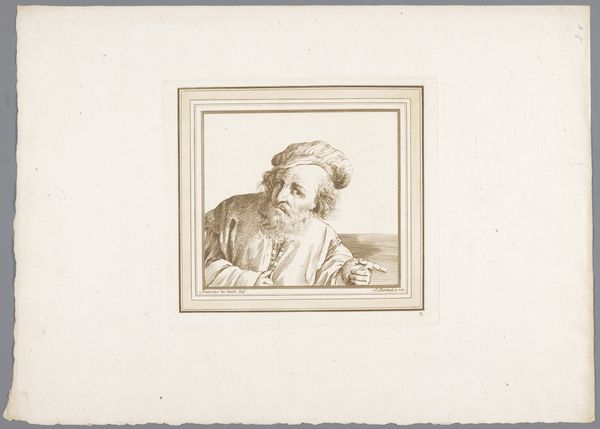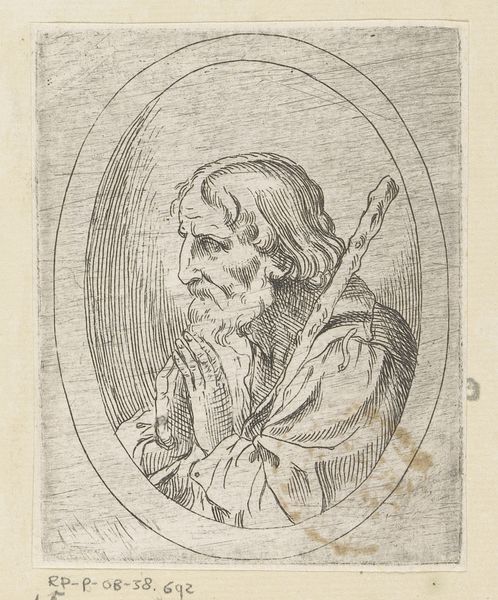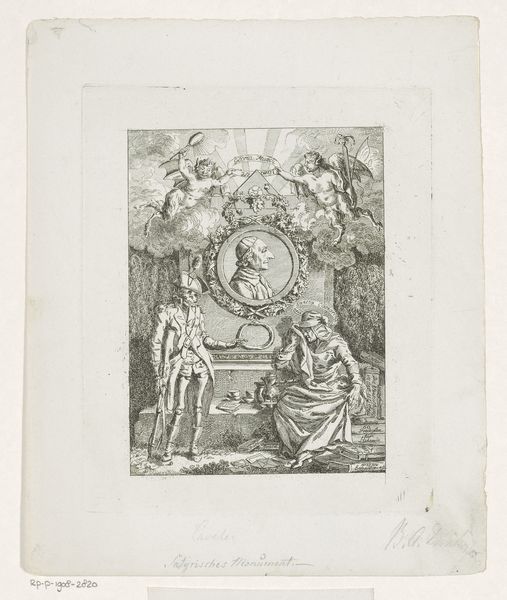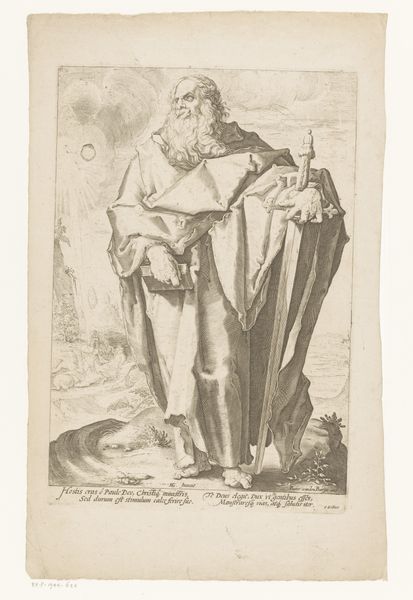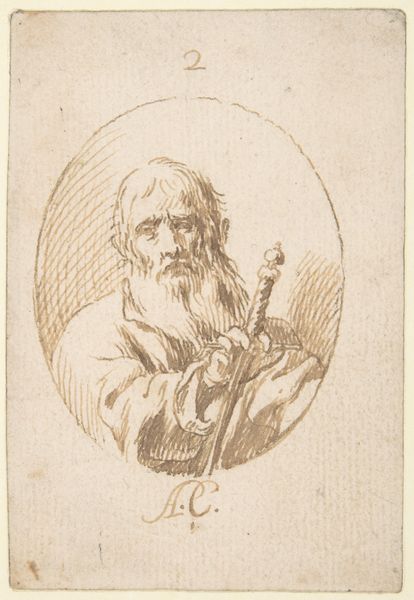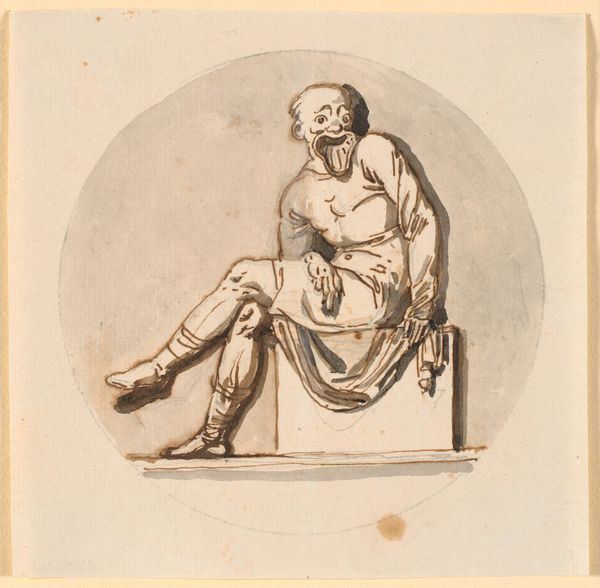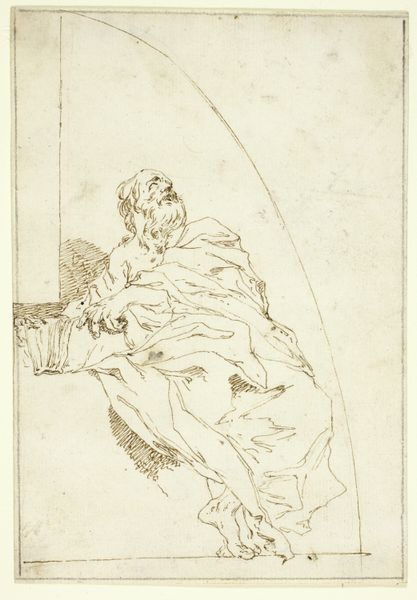
drawing, print, ink
#
portrait
#
drawing
#
baroque
# print
#
etching
#
figuration
#
ink
Dimensions: sheet: 6 1/2 x 6 7/8 in. (16.5 x 17.4 cm)
Copyright: Public Domain
Editor: So this is "Saint Jerome," a print made by Georg Anton Urlaub sometime between 1713 and 1759, currently housed at the Met. It looks like an ink drawing or etching... very gestural. I'm struck by the contemplative mood. What do you see in this piece? Curator: Beyond the traditional iconography of Saint Jerome—the beard, the book perhaps alluding to his translation of the Bible—I see an intriguing interplay between religious imagery and the politics of representation. Editor: How so? Curator: Well, consider the historical context. This was a period of intense religious and political upheaval. Representing Saint Jerome wasn’t just about faith; it was about power, knowledge, and the Church’s influence. Notice the way his gaze is directed. It isn't toward a divine source, but rather appears as if he is deep in thought. Who has access to knowledge? Who has the power to interpret it? These are crucial questions to ask. How do you think gender and race are in dialogue here? Editor: I guess I was just seeing it as a biblical study of this saint’s isolation and intellectual dedication. I didn't consider other angles! Curator: Exactly! It is key that we move past accepting religious figure representation at face value, it has power. Consider how Urlaub's Saint Jerome operates in discourse. Editor: This makes me see how incomplete my initial reading was. Curator: It reveals that no piece of art exists in a vacuum. Art actively intersects with religion and the culture of its time. We should embrace this reality to appreciate and promote truly profound insights.
Comments
No comments
Be the first to comment and join the conversation on the ultimate creative platform.
